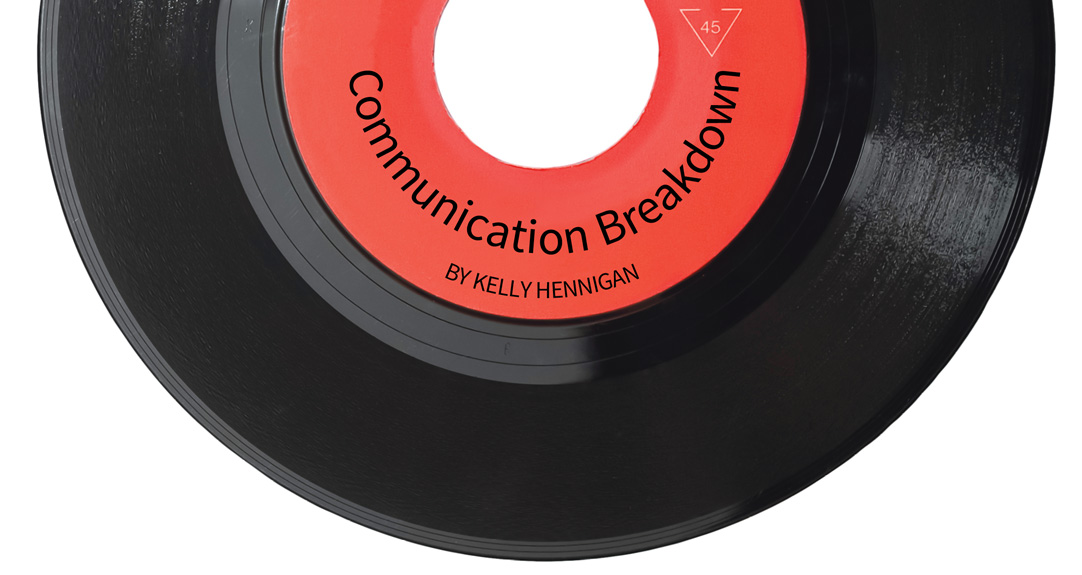Communication Breakdown
The importance of the “softer” skill of communication
February/March 2018The most humorous jokes are oftentimes inspired by real life events, which is exactly the case with this quip by Jerry Seinfeld. A 1973 survey conducted by R.H. Buskin asked 2,500 people to list their greatest fears. Forty-one percent ranked speaking in front of a group at the top of the list, while only 19 percent said they feared death. It turns out Seinfeld wasn’t joking!1 Fortunately, many actuaries have overcome their fear of public speaking, as was proven by the quality of the speakers and sessions at the 2017 Society of Actuaries (SOA) Annual Meeting & Exhibit in Boston.
The 2017 SOA Annual Meeting & Exhibit also confirmed the continued interest actuaries have in developing their softer skills, such as communication and social skills—and for good reason. One hundred years ago, Charles Riborg Mann released results from an extensive study that indicated 85 percent of job success came from having well-developed soft skills, while only 15 percent was driven by technical skills. Although this study is now a century old, the importance of soft skills has grown in recent years.
For example, TalentSmart, an organization that has studied emotional intelligence (EQ) in thousands of professionals over the last few decades, finds that emotional intelligence is responsible for 58 percent of job performance. They also found that 90 percent of top performers have high EQ. EQ, unlike IQ, can change over time. It also deals with skills such as self-awareness, self-management, social awareness and relationship management, all of which can be considered soft skills.2
The Annual Meeting Program Committee bestows Outstanding Session Awards to the top five sessions of the conference based on multiple criteria including, but not limited to, topic importance and relevance, evaluation ratings, and comments and attendance. Two of the five sessions that received these awards at the 2017 SOA Annual Meeting & Exhibit were sponsored by the SOA Leadership & Development Section and focused on softer skills: “From Technical Professional to Leader” and “Communication Breakdown.” I had the opportunity to moderate the latter. Within this issue of The Actuary, we include articles from several of the presenters involved with the 2017 outstanding sessions.
“Communication Breakdown” is a song by Led Zeppelin from its 1969 eponymous debut album. In its time, the song was an anthem for frustrated youth and was frequently played either to open the group’s shows or as an encore. Analogous to how actuaries often think about communication skills as being secondary to our analytical skills, the song was released on the B-side of the band’s first single in the United States, “Good Times Bad Times.”
For those of you unfamiliar with vinyl, records had an A-side and a B-side. The A-side featured the song music producers positioned to receive the most radio airplay and become a hit record. Meanwhile, less thought was typically put into the song selected for the record’s B-side, or “flipside”—this ensured the focus remained on the A-side, or the more commercial of the two tracks. Akin to the actuarial profession, frequently more emphasis is placed on our “A-side” of technical skills rather than on our “B-side” of softer skills, such as communication. This is especially true during the exam-taking process, when we invest hundreds of hours into learning highly technical and complex concepts. However, research has shown that over the long term, we need to focus more on our softer skills to have the biggest impact on our career success.
When the actuarial career was ranked as the nation’s best overall job in 2015, Tonya Manning, one of the past presidents of the SOA, stated, “Being strong in math is a given, but having soft skills, such as the ability to communicate well and work in a team, can be just as important.” Each summer, the SOA brings together the contributing editors of The Actuary magazine at its offices in Schaumburg, Illinois, for a brainstorming session. During this session, SOA staff and actuaries—who span a wide variety of practice areas—gather in a meeting room for a full day and contemplate potential future themes, topics, articles and authors for the upcoming year’s issues. During the course of the July 2017 meeting discussion, we realized that a recurring nontechnical theme was threaded throughout many of our collective brainstormed suggestions. It was then officially decided that an issue dedicated to communication would be in The Actuary’s lineup for 2018.
Within this issue, we are excited to provide our readers with a guidebook to communication. This magazine includes a variety of articles, resources and tools on various aspects of communication—relevant not just to actuaries, but to all professionals. In reading this issue, you will find pieces related to speaking to a nontechnical audience, building trust, managing effective meetings and a Q&A communication “panel”—just to name a few.
Thank you to those who contributed in the development of this issue—the collaborators, authors, proofreaders, contributing editors—you know who you are! I truly enjoyed bringing this issue together in conjunction with SOA Magazine Staff Editor Jacque Kirkwood.
George Bernard Shaw said, “The single biggest problem in communication is the illusion that it has taken place.” Across the many articles in this publication, you will find ways to develop your soft skills to avoid that illusion. We hope that you are able to refer back to this timeless issue as a communication reference in the coming months and years.
Related Link
Outstanding Sessions Award recipients
References:
- 1. “What Percentage of People Are Afraid of Public Speaking.” 2014. Public Speaking Power. January 16. http://publicspeakingpower.com/percentage-of-people-afraid-of-public-speaking/. ↩
- 2. “About Emotional Intelligence.” 2018. TalentSmart. Accessed January 5. http://www.talentsmart.com/about/emotional-intelligence.php. ↩

